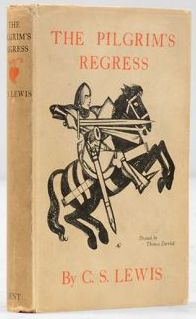#ThePilgrimsRegress
The Pilgrim's Regress
The Pilgrim's Regress is a book of allegorical fiction by C. S. Lewis. This 1933 novel was Lewis's first published work of prose fiction, and his third piece of work to be published. C. S. Lewis Society of Madison It charts the progress of a
Read More..
Ratings
Likes
Reviews
Popularity
Ranks
This #hashtag is not ranked yet.







